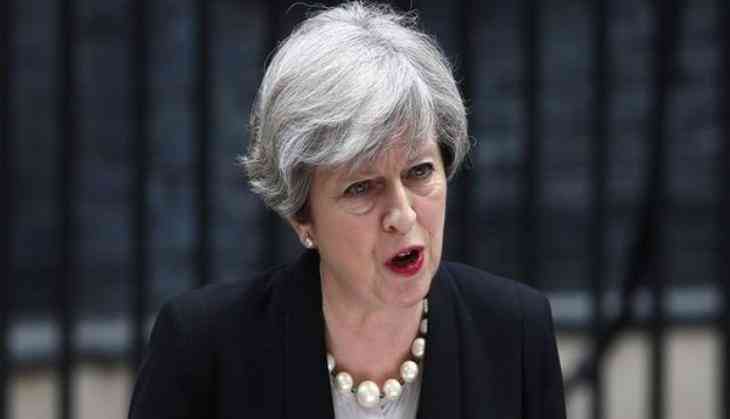
Embattled British Prime Minister Theresa May is expected to step down soon after failing to win over her ministers with a revised strategy over her plans for the UK's withdrawal from the European union.
May is set for a meeting with the chair of the Conservative Party's influential 1922 Committee of backbench MPs on Friday during which she is expected to unveil her plans to step down as Tory leader, triggering a leadership contest within the ruling party by June 10.
It is expected that May will stay on in Downing Street as caretaker Prime Minister to oversee the state visit of US President Donald Trump, planned for early June, with a new Tory leader expected to be in place by the end of July.
"Theresa May will be Prime Minister to welcome him [Trump] and rightly so," UK foreign secretary Jeremy Hunt said after a meeting with May at Downing Street on Thursday, during which he is said to have expressed his dissatisfaction with the prime minister's renewed attempt at getting her controversial Brexit Withdrawal Agreement Bill through the House of Commons. Hunt and a number of other Cabinet ministers, including UK home secretary Sajid Javid, have held similar one-on-one meetings with the prime minister to reiterate the lack of support for the Bill despite her proposed changes.
It came as May announced her latest reshuffle after the resignation of Andrea Leadsom as Leader of the Commons earlier in the week, with Mel Stride becoming the new Commons leader. May, who has been under constant pressure to step down since having survived a vote of no-confidence in December 2018, had even announced that she would set out her Downing Street exit plan once she had seen the first stage of Brexit through.
However, that exit has been precipitated as it became clear that the first stage of Brexit, passage of her Brexit Withdrawal Agreement, is unlikely to go through a fourth parliamentary vote. To add to her woes, she is also unlikely to survive the fallout from the European elections held on Thursday – the results of which are expected to deliver a massive bruising for the Tories when the results unfold on Sunday.
Voters are expected to punish both the Tories and the Opposition Labour Party for being forced to vote in a European Union (EU) elections despite the June 2016 referendum in favour of Brexit. The UK was to have left the 28-member economic bloc by March 29 but failed to meet that deadline and now faces a renewed Brexit deadline of October 31.
The next stage of negotiations with the EU are now likely to be taken ahead by a new incumbent in Downing Street, with former foreign secretary Boris Johnson seen as a frontrunner from the pro-Brexit wing of the ruling party.
However, a host of other contenders are expected to throw their hat in the ring, including fellow Brexiteer Dominic Raab as well as Cabinet ministers Sajid Javid, Michael Gove, Amber Rudd and Matt Hancock. The UK Parliament has remained in deadlock since it rejected May's Brexit deal negotiated with the EU three times.
The biggest sticking point has been the Irish backstop clause, which Brexiteers believe will be used to keep Britain tied to EU rules even after Brexit.
May's attempts to find a formal compromise with the Opposition Labour benches to try and win another Commons vote also ended in failure and resulted in her adding a series of sops to her rejected deal, including the offer of a parliamentary vote on a second referendum in response to demands from a large chunk of Opposition MPs.
However, the sops had the effect of only further angering her already divided Cabinet and hastened the end of her time as British Prime Minister with just under three years in power since she took charge in July 2016 weeks after the Brexit referendum.
-PTI


